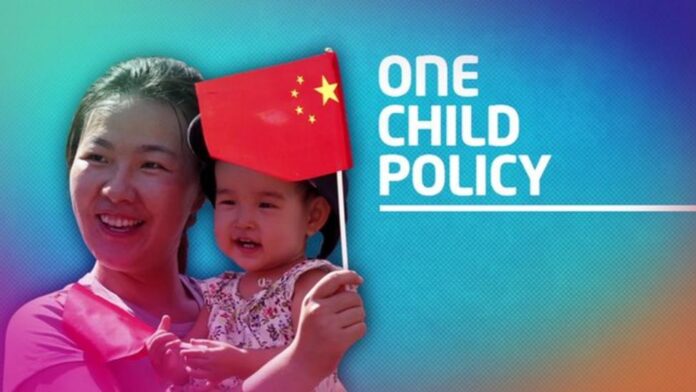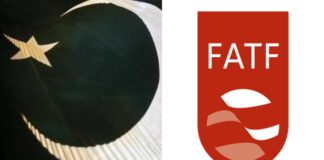When the one-child policy was introduced in 1982, it was called an effort to make China great. The communists used every means necessary to promote one-child policy. The campaign was so fierce that they indoctrinated an entire generation that took part in what can be termed as a ‘policy holocaust’
By Balaji Subramanian
Better to shed a river of blood than to birth more than one child” -Chinese Communist Party One-Child Policy
William Shakespeare, in Macbeth, said, “Unnatural deeds do breed unnatural troubles.” The phrase is apt to describe China’s one-child policy. For thirty-five years many couples had to live with a sequence of real Phantasmagoria – the frightening images of being forced to abort their child.
To promote its one-child policy, the communist government wrote operas and subverted folk arts to promote this unnatural population control program. Since the party de-facto controls everything, people were made to believe that everything is alright.
When the one-child policy was introduced in 1982, it was called an effort to make China great. The communists used every means necessary to promote one-child policy. The campaign was so fierce that they indoctrinated an entire generation that took part in what can be termed as a ‘policy holocaust’.
Families were made to feel embarrassed for having a second child and many women had to endure forced abortion. Those who had a second child had their lives ripped apart, literally. The communist party punished them by targeting their homes and taking their possessions.
The communist government turned the joy of becoming a parent into a traumatic experience. With the advent of the sonogram, sex determination became a standard practice.
“China’s one-child policy punishes families for having ‘out-of-plan’ children, resulting in sex-selective abortion and tens of millions of ‘missing girls’ as well as forced abortion and sterilization campaigns.” – Chris Smith
In the 1980s when the one-child policy became law, the Chinese population was predominantly rural and it was not an easy task for such laws to be enforced. This put a lot of strain on those who had to implement this sadistic law. However, insubordination on the part of officials was not tolerated and any defiance from families who protested against forced sterilization was crushed. Many women were forcibly taken from there homes so doctors could perform abortion and to keep people in line there was ample State security to enforce the law.
Hundreds of thousands of women had forced abortion in China and in many cases, labour was induced and the babies killed. This must-have caused serious physical and mental trauma along with long terms psychological effects like depression, anxiety, and many became insane due to shock. The fetus/fully developed babies were wrapped in a plastic bag with medical waste printed on it.
This horror was documented by a prominent Beijing-based artist called Peng Wang. When authorities discovered this, they evicted him from a studio in the capital. Wang made artworks of “fetuses aborted and babies abandoned” under the country’s controversial family-planning controls.
The hardest termination of the fetuses was when they were aborted at eight to nine months which is practically the end of the gestation period. By twenty-four weeks a baby’s organs are fully formed and it would be unimaginable when a fetus which is technically a baby is terminated at thirty-four to thirty-eight months.
Since there is practically no room for dissent in China, many of these forced abortions and sterilizations were carried out reluctantly by officials. Abortions and sterilizations were carried out at an industrial scale and the doctors and midwives worked in an assembly line of death. Each Village had family planning workers and they were punished or rewarded based on how many children were born in their village.
Nothing was allowed to come between the writ of the party which is infallible. The loyalty towards the Communist party was absolute and it could not permit any humanity or tolerate conscience that led these people to perform such ignoble deeds. Since individualism was considered as a progressive and liberal slogan, it was unfathomable for anyone to voice protest and if they did it was crushed.
Slogans were written on walls that read, “Don’t get pregnant without permission or permit” and people were told to report on anyone who had a second child. Those who reported were given a reward.
It is estimated, these forced abortions and sterilizations resulted in preventing 330 million births. If half of these fetuses were female, imagine how it has already affected the sex ratio in China.
According to an American journalist and author, Howard W French, a professor at the Columbia University Graduate School of Journalism, “The one-child policy was based on some faulty science and had, as an ambition, reining in Chinese population growth, so as to enhance the per capita wealth of the country.”
The Cultural Revolution and the Great Leap Forward
It must be noted during the rule of Mao Zedong, from 1949 to 1976, nearly 70 million Chinese died. The Great Leap Forward, from 1958 to 1962, itself resulted in tens of millions of deaths, with estimates ranging between 18 million and 45 million deaths. Also, the same number of births were lost or postponed, making the Great Chinese Famine one of the darkest periods in China.
Frank Dikotter in his book Mao’s Great Famine: The History of China’s Most Devastating Catastrophe, 1958–62, writes in detail how Mao and the senior politburo knew of the ground situation and despite millions not having access to food, the Communist party increased the food procurement quota from the countryside to pay for international imports.
Mao, said, “When there is not enough to eat people starve to death. It is better to let half of the people die so that the other half can eat their fill.” The one-child policy was also conceived with such thoughts to enhance the per capita wealth of the nation.
The Great Leap Forward was the largest mass murder in all of world history, however, the number of forced abortions that took place in China due to the one-child policy dwarfs the death caused by Chairman Mao.
China’s gender imbalance
According to an article published in Scientific American, there is serious gender imbalance among newborns as “the most serious and prolonged” in the world, a direct ramification of the country’s strict one-child policy. In China, 118 boys are born for every 100 girls, against a global average of 103 to 107.
Although fetal sex determination is prohibited in China under the law, many couples still send blood samples overseas to determine the sex of the fetus. Researchers who study sex ratios have determined that uneven sex ratios in the population could lead to increased violence and social instability.
Son preference in China through sex determination and sex-selective abortion, and neglect and abandonment of female children, has led to higher female mortality.
When the one-child policy was introduced, most Chinese in the 1980s lived in a rural area without access to sonography that could determine the sex of the fetus. That is why in many cases when a girl child was born, it was abandoned and not much imagination is required to know the fate of these hapless girl children.
Another aspect of the one-child policy was the trafficking of abandoned babies. Many were sold to orphanages who would put them up for adoption once the Chinese government allowed international adoption. These traffickers did not even have to steal babes because they would pick most of them from the market places or roads.
Such was the desire to have a boy, women who had given birth and had not even nursed the newborn would give it away or had to give it away due to pressure from family. The guilt is carried by many women in China even to this day.
Right now in China, there are 34 million more men than women and many and these men are referred to as China’s “leftover men”. Often they are subject to such comments, such as guang gun, “bare branches” in Chinese – or the “biological dead ends of their family tree”.
The one-child policy was enforced so strictly, people had to comply as they stood helpless and the trauma they had to endure. Many in China find solace that they did for the sake of the country but deep down in their heart, a part died.
For thirty-five years the one-child policy literally ripped children away from the womb of the mothers. China faces a demographic challenge as the number of old people will increase exponentially. As China tries to wipe its slate clean of its one-child policy with propaganda, the pain and agony the communist party caused to millions of its people will slowly fade away.
It is estimated by 2050, about one-third of the population in China will be over the age of 65, and the number of “working-age people is forecast to fall precipitously.”
It has been five years since the one-child policy was scrapped, but one must remember that the damage it has caused to millions of people in China can never be measured.
Already the Chinese state has started to erase its involvement in enforcing the one-child policy from the public square. Just as the massacre of Tiananmen square has been erased from the history books of China and is now a distant memory for many Chinese, the dark memories of forced abortions and sterilizations are well on its way to meet the same fate.
It is in human nature to simply try and forget unwanted memories, either consciously or unconsciously to cope with pain and loss.
However, the one-child policy of the Communist state of China did shed a river of blood and along with the blood, there was a flood of tears and a lifetime of sorrow.
Balaji Subramanian is a freelance writer who writes in the field of mental health, music and politics. He tweets @LaxmanShriram78












